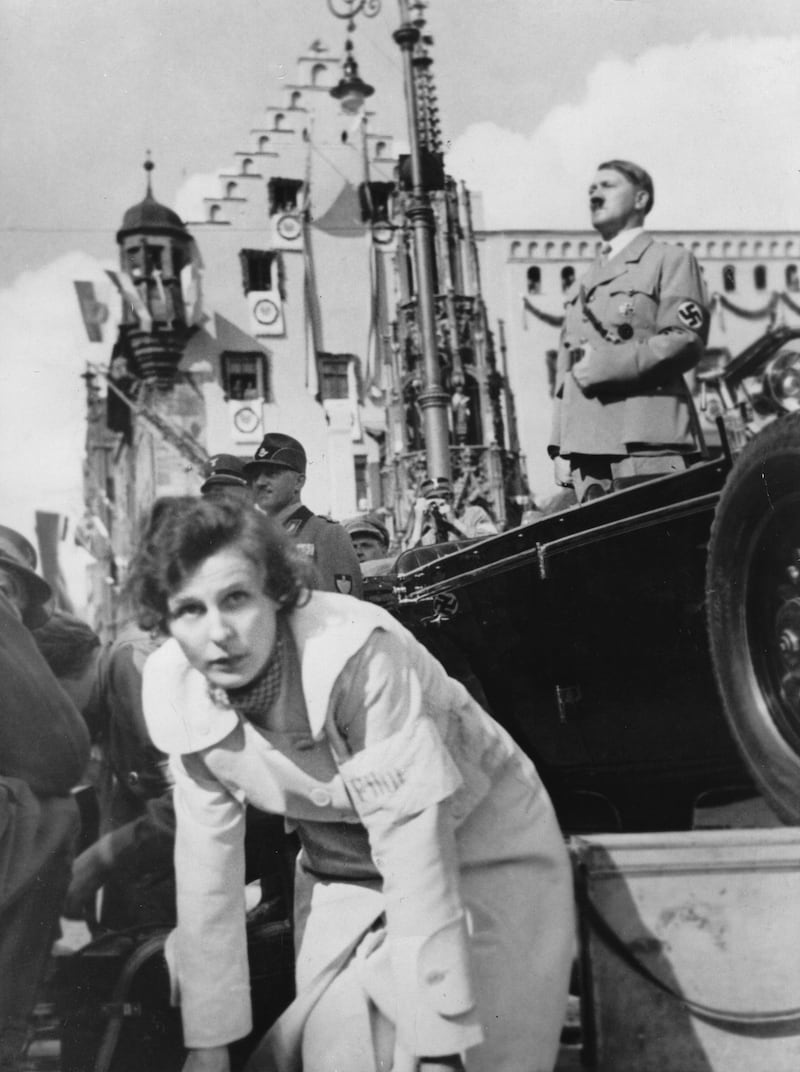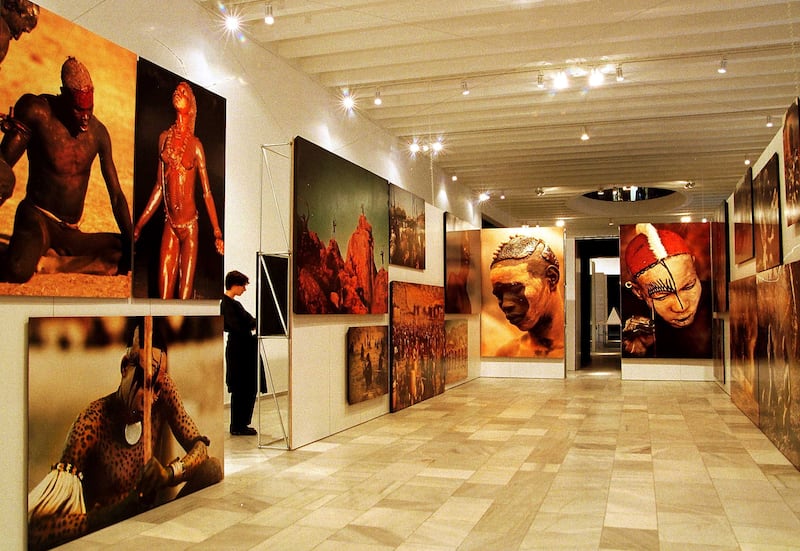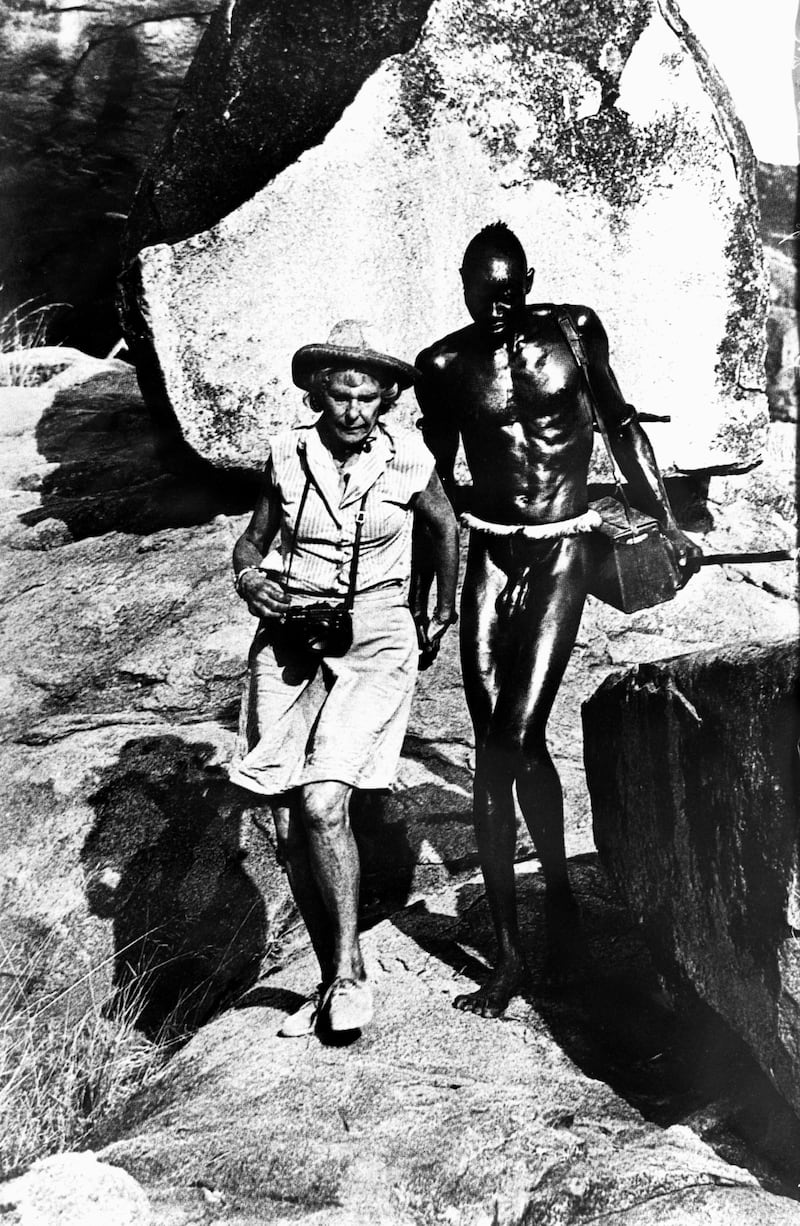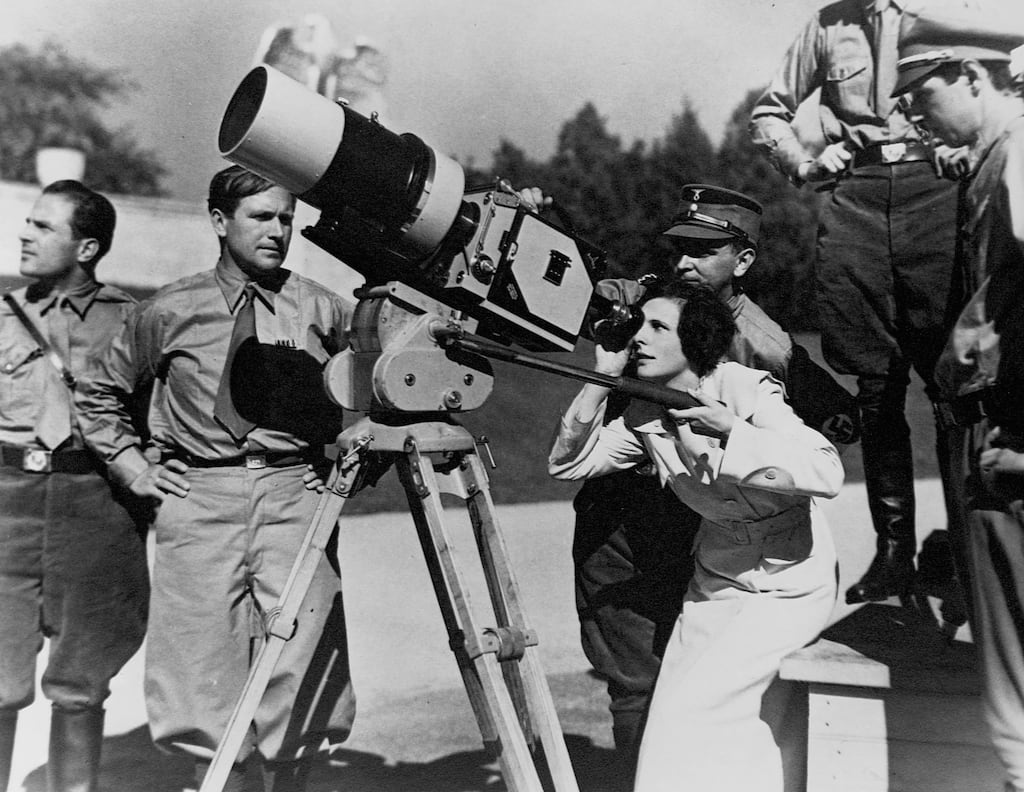The first time I saw Leni Riefenstahl’s photographs was in the library at Queen’s University Belfast. I was looking for a different book. But this one caught my eye: a worn red hardback with the single word “Olympia” printed on the spine.
Inside the book were black and white photographs of athletes in action: running, jumping, swimming, sailing, throwing the discus. They were competitors in the 1936 Berlin Olympics, which Riefenstahl had filmed.
Such moments take on personal significance only in hindsight. I couldn’t have known, back then, that this chance discovery in a library would be the springboard for my novel, The Stamp of Beauty. All I knew was that these images had power.
In 1934 Riefenstahl made what has been described as “the ultimate Nazi propaganda movie”. Some consider it the most influential propaganda film in history. It was called Triumph of the Will and Hitler liked it so much that he commissioned Riefenstahl to film the Berlin Olympics too.
READ MORE
Olympia, a four-hour extravaganza, was almost as much of a propaganda victory for the Nazis as Triumph of the Will. It showcased Germany, under the National Socialists, as a powerful, peaceful and tolerant nation. This was part of a wider plan to seduce the German public through symbol and spectacle, a series of awe-inspiring processions and parades, each one grander than the last.

The Nazis were notoriously obsessed with art, even organising a show of so-called “degenerate art” – modernist and avant-garde works, many by Jewish artists, which had been seized in a systematic purge of museums and galleries. The show was intended to demonstrate that modernist art was the result of genetic inferiority and the moral decline of society.
I knew a little about the shameful events of this period. On a recent trip to Berlin, I’d seen an exhibition based on a hoard of looted Nazi art, worth up to €1 billion, which was discovered in a Munich apartment in 2011. There were an incredible range of pieces on display, from Dürer to Monet, and Cranach to Rodin and Otto Dix.
The exhibition documented the Nazi “degenerate art” policy, and it also included examples of approved Nazi art, which were generally awful: extravagant, overblown kitsch – an embarrassing caricature of romantic art.
The photographs I was looking at in Riefenstahl’s Olympia book couldn’t be described like that. Some of them were entrancing, especially the shots of the high dive, which were stunning in their beauty and clarity of form. The divers’ bodies, framed against the sky, seemed to have all the grace and freedom of birds.
But these images were indelibly tainted too. It was impossible to escape the fact that they had been made by someone who was a willing instrument of the Nazi regime, bought and paid for by Hitler himself.
I put the book back on the shelf.
I kept thinking about Riefenstahl, though. Who was the woman who had taken these photographs? How had she become Hitler’s film-maker, his “perfect German woman”? And why had she harnessed her remarkable talent to this unspeakably evil regime?
I began reading and watching everything I could find about her. The most valuable source of insight was a 1993 documentary film, made by Ray Müller, in which Riefenstahl starred, then aged 90. (One got the impression that Riefenstahl never simply appeared, she always starred, certainly in her own mind.)
Riefenstahl said she had been blissfully unaware of the horrors being perpetrated around her. During the book-burnings in Berlin, she was out of the country
The Wonderful, Horrible Life of Leni Riefenstahl revealed a woman whose inexorable will to power, as well as her capacity for self-delusion, had not dimmed with age. She minced around the scenes of her former triumphs, such as the parade ground at Nuremberg, or the Olympic Stadium in Berlin, in a pink gaberdine coat and matching white handbag and heels, still in love with her own self-importance.
Riefenstahl said she had been blissfully unaware of the horrors being perpetrated around her. During the book-burnings in Berlin, she was out of the country and heard nothing about it. At Nuremberg, shooting Triumph of the Will, she “just observed and tried to film it well”. She said she was merely a film-maker, going about the business of her art, with no reference to politics or propaganda.
“You were later accused of seducing people with that film,” said Ray Müller in the documentary. Riefenstahl shrugged insouciantly and tossed her blonde curls, as though she was 19, not 90. “Okay, a few idiots say that.”
When Kristallnacht happened, in November 1938, Riefenstahl was in New York promoting her film Olympia. Questioned by American journalists, she dismissed the reports of a thousand burning synagogues and tens of thousands of Jewish people being imprisoned in concentration camps, saying that she simply could not believe such a thing could have occurred.
As for being intimate friends with the propaganda minister, Joseph Goebbels (as his diaries record), she loudly denounced this as a pack of lies, saying that the two of them were in fact mortal enemies.
It was not until the end of the war, according to Riefenstahl, that her admiration for Hitler was shattered. Finally, after 60 million deaths , she was “appalled”.
“When you discovered the crimes of the Third Reich, did it change how you regarded your own work?” asked Müller, whose patience, at this point, must have been wearing thin.
“No. I was just appalled and confused to have lived through that period ... I’ve never recovered from the horror,” replied Riefenstahl, with a jarringly bright smile.
By now, I knew I wanted to write about Riefenstahl, in some form or another. The terrible wonder of her life had taken hold of my imagination and wouldn’t let go. But it wasn’t until I read an article by the critic Susan Sontag, originally published in the New York Review of Books in 1975, that I found the direction my story would take.
The article was called Fascinating Fascism, and it was a review of a new book of photographs by Riefenstahl, depicting the Nuba people in the mountains of southern Sudan.


Following the war, Riefenstahl was kept under arrest for four years by the Allies, and was twice cleared by special courts of having been a Nazi. After that she became a virtual recluse. But then, aged 60, she made a dramatic comeback, travelling alone to live with the Nuba in Africa. (She said that she was inspired by reading Hemingway’s The Green Hills of Africa during “one sleepless night in the mid-1950s”.)
Sontag noted the “god-like” physical perfection of the tribesmen in the photographs: tall, muscular, expressive, their bodies smeared with sacred ash as they ritually wrestled one another. Once again, as ever with Riefenstahl, beauty was to the fore.
By the time The Last of the Nuba was published, Riefenstahl was enjoying something of a renaissance. Suddenly she was being feted as a feminist pioneer, one of cinema’s greatest innovative artists. Her own perpetual plea – that all she cared about was beauty and harmony – was accepted and even celebrated, her inglorious past apparently forgotten.
It’s true that many of Riefenstahl’s innovations – such as filming the Olympic athletes from dugouts so that they were silhouetted against the sky – later became standard practice. Her extraordinary skills were never in dispute.
But as Sontag pointed out, Riefenstahl’s obsession with beauty was always corrupt. From the beginning she worshipped strength, power and the body beautiful in a way that was unmistakably fascist. Her photographs of the Nuba were merely a continuation of the same mythologising aesthetic. “Fascist art glorifies surrender, it exalts mindlessness, it glamorises death,” Sontag wrote.

Shortly after I read Sontag’s essay, the character of Patti Barbour, the anti-heroine of my novel, strolled into my mind and took up residence. In The Stamp of Beauty Patti is a once-acclaimed war photographer with an appalling secret in her past. Like her muse, Leni Riefenstahl, after whom she named her daughter, Patti is charismatic, mercurial and ruthless, with a highly selective relationship with the truth. When she moves in with Leni and her young family, Patti is like an undetonated bomb, waiting to go off, with disastrous consequences for everyone around.
As for Riefenstahl, she died peacefully in her sleep in September 2003, aged 101. She remains the most famous female film director of all time.
The Stamp of Beauty is published by Dalzell Press on Thursday, January 12th














